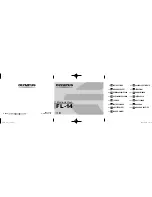
Users Manual – svs4021, svs2020,svs2050, svs2051, svs1020, svs1050, svs285, svs340, svs625
p. 16
Last Update 20.07.2009
3.2.2
Persistent Network address assignment
Open the dialog by selecting “Network settings” in the context menu that comes
up when right-clicking on an entry in the discovery dialog:
All settings in the “Network configuration” dialog will be transferred to the
camera and they will be made persistent on the EEPROM inside the camera.
Therefore this dialog allows for assigning a non-volatile network address to a
camera which it will maintain also over shutdown and restart cycles.
Network settings performed in this dialog become valid but after a
reboot of the camera.
In addition to a persistent network address it can be decided whether the
camera will try to obtain a dynamic network address from a DHCP server on
start-up. If this option is used the camera can no longer be identified uniquely
by IP address. Instead, other items like MAC address, serial number or the user
defined name can be used for this purpose. Usually the DHCP method is
convenient for involving a camera in to an already existing network of
computers which all obtain their IP addresses from a DHCP server. The camera
will well behave in this environment when adjusting it also to the DHCP mode.
In some cases it may be that a camera will be connected for performance
reasons directly to a dedicated network card. Given that this network card has
not got assigned a valid IP address there is
a fall-back procedure
defined
which takes automatically a network address from a special range that has
been assigned for this purpose. This is the so called
“Link Local Address
(LLA)”
behavior that constitutes the last item in a chain of fallback cases. It
has been defined in the
GigE Vision standard document
that the LLA fall-
back procedure can never be deactivated. Therefore the LLA checkbox is
deactivated but always in a checked state.
Currently the Default gateway setting is not used and therefore deactivated.
This is related to performance considerations which recommend to operate GigE
cameras in the same network segment where the clients exist and not to route
the data stream in to other networks.
















































